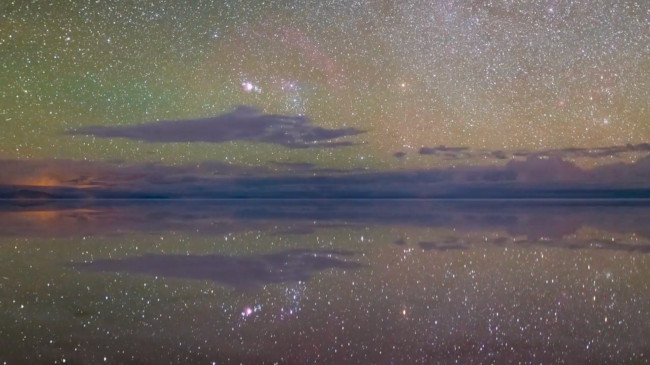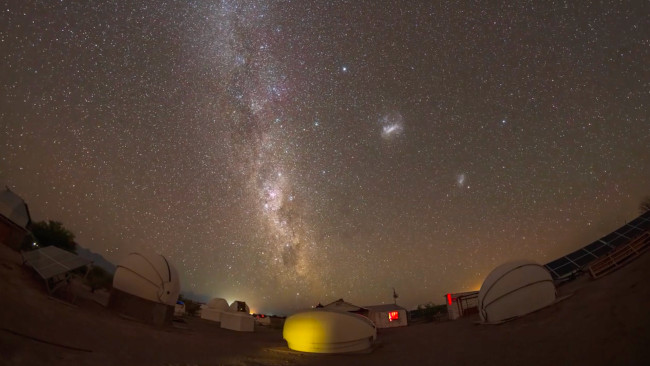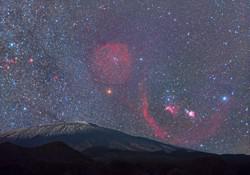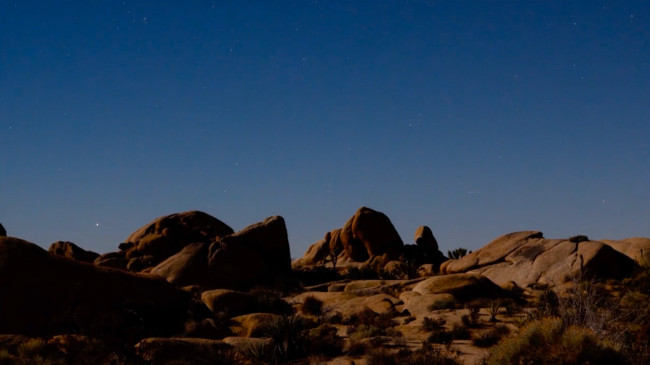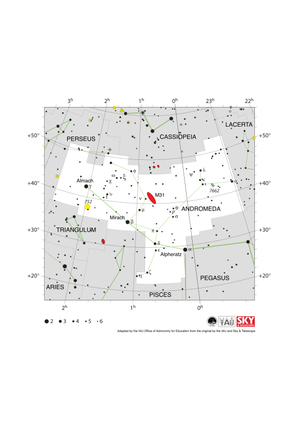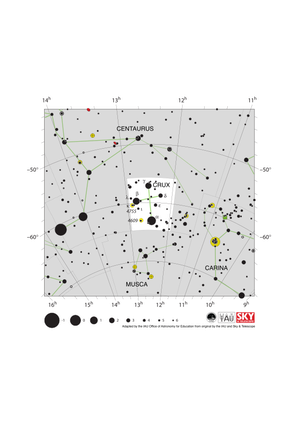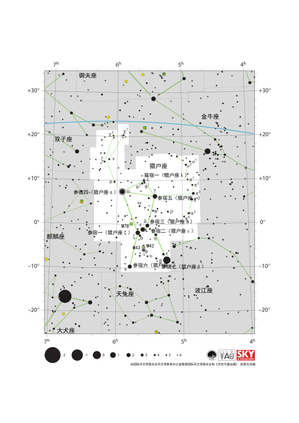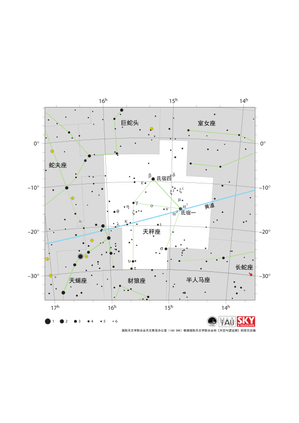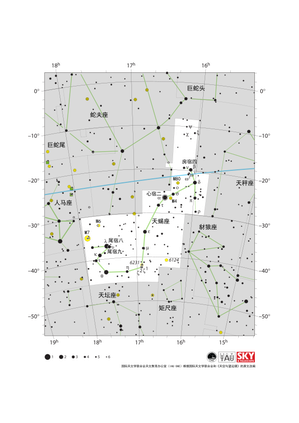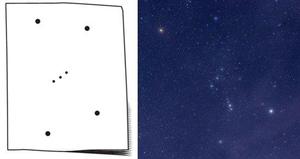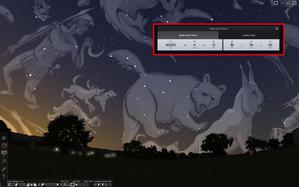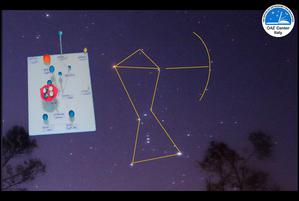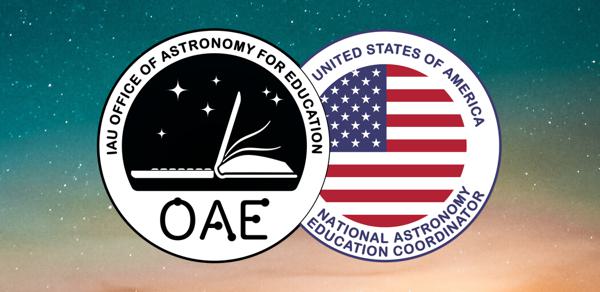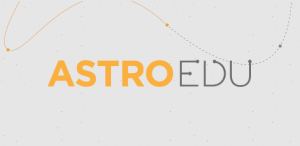Glossary term: 星座
Description: 用现代科学术语来说,星座是天球中划分出的一个多边形。国际天文学联合会将整个天球划分为 88 个区域,即星座。这个划分以古希腊使用的星座为基础,加上最新增加的(特别是南半球新增加的)星座。88 个星座都占据天空的某一部分,因此,从恒星、星系到星云等,每个天体都可以与一个星座联系在一起。黄道十二宫由 13 个星座组成,它们与黄道(太阳每年在天球上划过的轨迹)重叠。这 13 个星座是蛇夫座、射手座、摩羯座、水瓶座、双鱼座、白羊座、金牛座、双子座、巨蟹座、狮子座、室女座、天秤座和天蝎座。
星座包含一组恒星(小行星),从地球上看是一个图案。这些图案被形象地描述为代表人类、动物或其他可识别的物体。
Related Terms:
See this term in other languages
Term and definition status: The original definition of this term in English have been approved by a research astronomer and a teacher The translation of this term and its definition is still awaiting approval
The OAE Multilingual Glossary is a project of the IAU Office of Astronomy for Education (OAE) in collaboration with the IAU Office of Astronomy Outreach (OAO). The terms and definitions were chosen, written and reviewed by a collective effort from the OAE, the OAE Centers and Nodes, the OAE National Astronomy Education Coordinators (NAECs) and other volunteers. You can find a full list of credits here. All glossary terms and their definitions are released under a Creative Commons CC BY-4.0 license and should be credited to "IAU OAE".
If you notice a factual or translation error in this glossary term or definition then please get in touch.
Related Media
二重天之间
Credit: 法布里齐奥-梅兰德里/国际天文学联合会教育办公室
License: CC-BY-4.0 Creative Commons 署名 4.0 国际 (CC BY 4.0) icons
世界各处的星座
Credit: Stephanie Ye Ziyi/IAU OAE
License: CC-BY-4.0 Creative Commons 署名 4.0 国际 (CC BY 4.0) icons
智利的夜空
Credit: Robert Barsa/IAU OAE
License: CC-BY-4.0 Creative Commons 署名 4.0 国际 (CC BY 4.0) icons
猎户座在埃特纳火山上空升起
Credit: Dario Giannobile/IAU OAE
License: CC-BY-4.0 Creative Commons 署名 4.0 国际 (CC BY 4.0) icons
老人星上中天
Credit: Fabrizio Melandri/IAU OAE
License: CC-BY-4.0 Creative Commons 署名 4.0 国际 (CC BY 4.0) icons
Related Diagrams
Andromeda Constellation Map
Credit: Adapted by the IAU Office of Astronomy for Education from the original by IAU/Sky & Telescope
License: CC-BY-4.0 Creative Commons 署名 4.0 国际 (CC BY 4.0) icons
Crux Constellation Map
Credit: Adapted by the IAU Office of Astronomy for Education from the original by IAU/Sky & Telescope.
License: CC-BY-4.0 Creative Commons 署名 4.0 国际 (CC BY 4.0) icons
猎户座星图
Credit: 由国际天文学联合会天文教育办公室根据国际天文学联合会/《天空与望远镜》的原文改编
License: CC-BY-4.0 Creative Commons 署名 4.0 国际 (CC BY 4.0) icons
天秤座星图
Credit: 国际天文学联合会天文教育办公室(IAU OAE)根据国际天文学联合会和《天空与望远镜》的原文改编
License: CC-BY-4.0 Creative Commons 署名 4.0 国际 (CC BY 4.0) icons
天蝎座星图
Credit: 国际天文学联合会天文教育办公室(IAU OAE)根据国际天文学联合会和《天空与望远镜》的原文改编
License: CC-BY-4.0 Creative Commons 署名 4.0 国际 (CC BY 4.0) icons
Related Activities
What is a Constellation?
astroEDU educational activity (links to astroEDU website) Description: Investigate three dimensional objects and perspective using constellations
License: CC-BY-4.0 Creative Commons 署名 4.0 国际 (CC BY 4.0) icons
Tags:
Hands-on
Age Ranges:
6-8
, 8-10
Education Level:
Primary
Areas of Learning:
Modelling
, Social Research
Costs:
Medium Cost
Duration:
1 hour 30 mins
Group Size:
Group
Skills:
Analysing and interpreting data
, Asking questions
, Constructing explanations
, Developing and using models
Make a Star Lantern
astroEDU educational activity (links to astroEDU website) Description: Learn about constellations by building a star lantern.
License: CC-BY-4.0 Creative Commons 署名 4.0 国际 (CC BY 4.0) icons
Age Ranges:
6-8
, 8-10
Education Level:
Primary
Areas of Learning:
Fine Art focussed
, Interactive Lecture
Costs:
High Cost
Duration:
1 hour 30 mins
Group Size:
Group
Skills:
Asking questions
, Communicating information
, Developing and using models
Moving constellations
astroEDU educational activity (links to astroEDU website) Description: Let's learn how stars in constellations move through time using real astronomical images.
License: CC-BY-4.0 Creative Commons 署名 4.0 国际 (CC BY 4.0) icons
Tags:
Software
, Data analysis
, stellarium
, gaia
, hipparcos
, ursa major
Age Ranges:
10-12
, 12-14
, 14-16
, 16-19
, 19+
Education Level:
Middle School
, Secondary
Areas of Learning:
Guided-discovery learning
, Observation based
, Technology-based
Costs:
Free
Duration:
3 hours
Skills:
Analysing and interpreting data
, Asking questions
, Communicating information
, Developing and using models
, Engaging in argument from evidence
Orion constellation in 3D
astroEDU educational activity (links to astroEDU website) Description: Let's make a simple model of the Orion constellation
License: CC-BY-4.0 Creative Commons 署名 4.0 国际 (CC BY 4.0) icons
Age Ranges:
8-10
, 10-12
Education Level:
Primary
Areas of Learning:
Guided-discovery learning
, Modelling
, Social Research
Costs:
Low Cost
Duration:
2 hours
Group Size:
Group
Skills:
Analysing and interpreting data
, Asking questions
, Developing and using models

